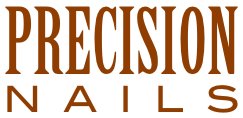As a salon owner and manicurist, I use no fewer than 10 different “business tools” on any given day. They’ve become such an integral part of my business that it’s difficult (read: frightening) to imagine functioning without them. Granted, some of the functions could be outsourced, but I choose to do most of it on my own with my most trusted tools:
- A computer/laptop, wireless internet access and a smart phone. For most people, computer technology has integrated with our daily lives, regardless of the work we do. We’ve adapted quickly to interacting electronically, both professionally and socially. Increased dependence on technology may be resisted by some, but it’s a powerful trend that’s not likely to be reversed. Twenty years ago, these devices and capabilities may not have been necessary for salon ownership, but there’s no denying that without them, the following would not be feasible.
- Accounting software. I’ve been using Quicken by Intuit to track my business and personal finances for more than 20 years. As a Mac user, that hasn’t always been easy or convenient, like the time I upgraded to Lion OS X without first checking that my software was compatible. It wasn’t, and a workaround was necessary until Intuit fixed the problem. The usefulness of Quicken is most apparent at year’s end when I can immediately produce the information my certified financial planner (CFP) needs to prepare my taxes. To ensure that I don’t lose any data, I save and backup a copy every day. If you’ve ever used accounting software and lost your data, you’ll understand why.
- Online access to business and personal checking account(s). This may seem obvious, but it was not that long ago that bank customers would rely on printed monthly statements to reconcile their accounts. I need to know account details on a daily basis to manage my finances. In just a few minutes each day, I can confirm and plan the flow of deposits and payments from my accounts.
- Online bill payments. I hardly ever write checks anymore; it takes almost a year to use 25 of them. Instead, I prefer the immediacy and reliability of paying bills online. It doesn’t cost anything (no envelopes/postage) and can be scheduled in advance to avoid any late payments. For recurring bills like utilities, automatic payments make the most sense as I don’t have the time or patience to review and process monthly statements. Moreover, opting to receive electronic billing statements reduces the amount of paper I have to handle and store.
- Salon management software. This is the first tool in my list designed specifically for salon owners, but that doesn’t make it any less important. If it didn’t exist, I’d be limping along with a paper schedule and index cards, or patching a calendar program and address database together with some random point-of-sale (POS) software. Why bother when I could use a single, targeted software that combines these functions and more? In my salon, STX handless scheduling, client records, inventory control, employee time clock, credit card processing, gift card tracking, email appointment reminders and other functions I don’t even use.
- Email and voicemail. Email is my preferred means of communicating, particularly when I need to attach photos/documents or archive an exchange. Voicemail, a simple and often underutilized technology, remains important also. My employees and I don’t answer the phone while providing services; the ringer is off anyways. Instead, we discretely retrieve and respond to email and voicemail between clients. We don’t text message with clients because it’s too informal in my opinion.
- A professional website. I’ve written extensively about the advantages of maintaining a professional salon website; it’s the most cost-effective way to reach potential clients. Through my website, I can also promote my industry activities beyond the salon, like my monthly articles published by the Stylist, upcoming classes/beauty shows and product recommendations.
- Social media. Lumping different platforms together may be unfair because I find some more useful than others. For example, I frequent Facebook and NailTech, browse certain blogs and dabble with Twitter. Other platforms, like YouTube, Instagram, LinkedIn, Yelp and Pinterest, don’t play any role in my business at this time.
- Online payroll services. After eight years of faxing payroll every other Monday and not knowing the details until two days later, I’ve changed service providers to Intuit and could not be happier. Not only is the service more technologically advanced, it’s more affordable, about half the price. Moreover, I was able to transfer my existing workers’ compensation insurance policy without disruption.
- Manufacturer websites. Printed product catalogs and mailings have become less important as manufacturers make it convenient to research their products and shop online. I don’t have time during “normal” business hours to place orders by phone, so I much prefer the 24/7 availability of these sites.
By Jaime Schrabeck, Ph.D.



